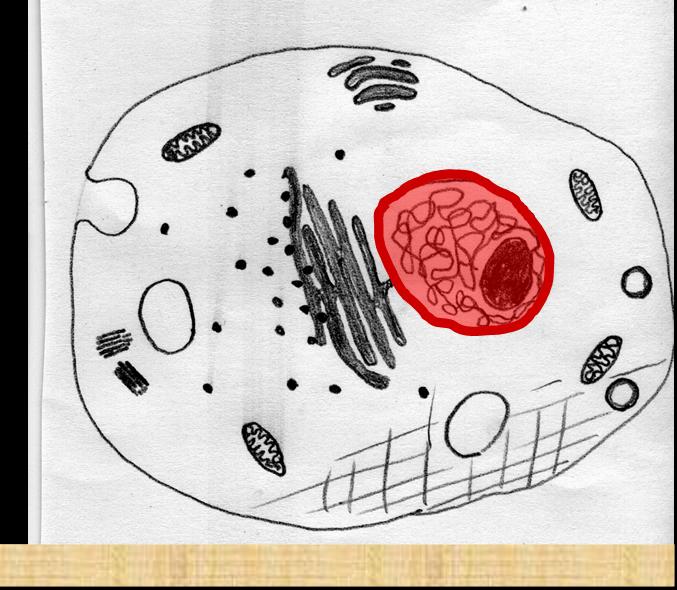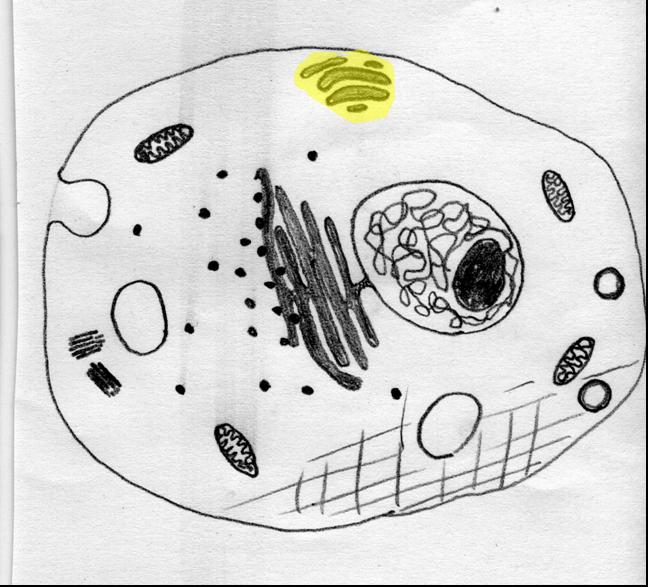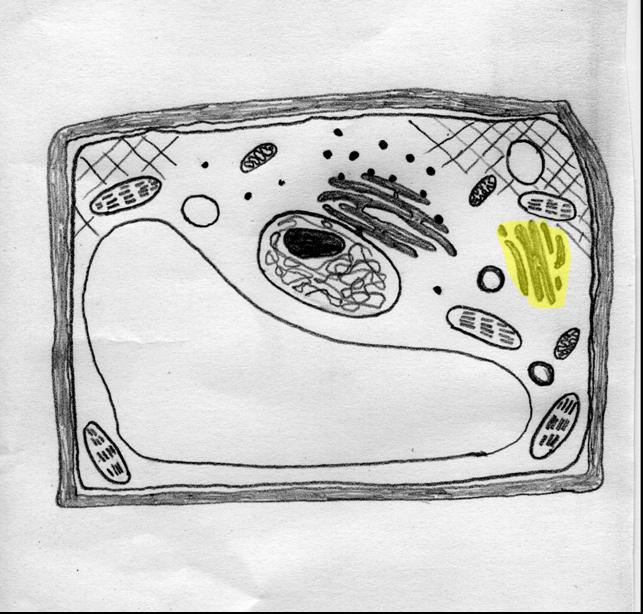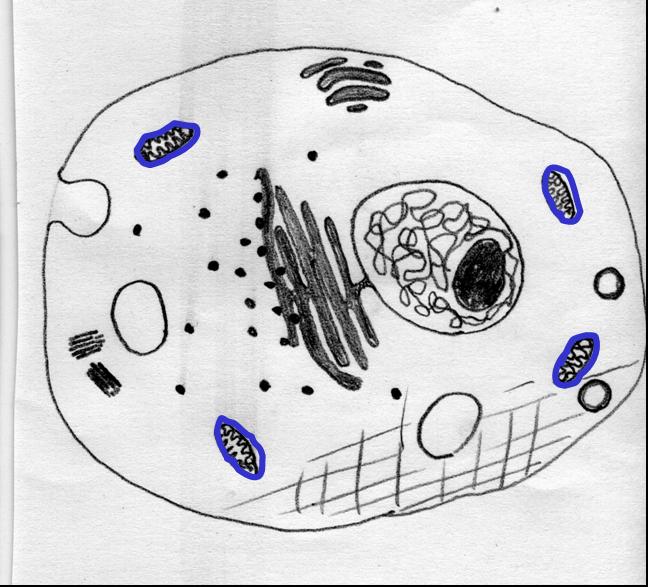| A | B |
|---|
| The smaller structures inside the cell which have specific functions are called __. | organelles |
| Which organelle stores the DNA of a cell? | nucleus,  |
| TRUE OR FALSE: Both plant and animal cells have a cell wall. | False (Although both have a cell membrane, like any kind of cell, animal cells don't have a stiff cell wall. However, all members of the Fungus kingdom and Bacteria kingdoms have cell walls as do some Protists) |
| TRUE OR FALSE: Both plant and animal cells have chloroplasts. | False (Chloroplasts allow eukaryotic cells to make their own food using the process of photosynthesis. Plants and protists that do photosynthesis, namely the algae, have chloroplasts. Bacteria that do photosynthesis don't have chloroplasts because they don't have organelles that are surrounded by a membrane. There is a lot of evidence however that chloroplasts actually used to be photosynthetic bacteria that just lived inside bigger cells) |
| What is located just inside the cell wall of plant cells? | the cell membrane (a.k.a. the plasma membrane),  |
| The ______ doesn't allow DNA to leave the nucleus. | nuclear membrane (a.k.a. nuclear envelope) |
| Which organelle do plants use for photosynthesis? | chloroplasts, 
|
| A long molecule of DNA wrapped tightly around proteins is known as ___. | a chromosomes, 
|
| Which part of the cell regulates what enters or leaves the cell? | cell membrane |
Chloroplasts contain a green pigment called ____ that helps capture the energy from the sun for the process of photosynthesis., 
| chlorophyll, 
|
| The thick liquid interior of the cell is called the | cytoplasm (technically, the liquid part should be called the cytosol while the liquid part plus all of the organelles other than the nucleus is included in the term "cytoplasm" but may books don't use the term cytosol or refer to cytosol and cytoplasm as if they were the same thing), 
|
| Chloroplasts contain a green pigment called chlorophyll that helps capture the energy from the sun for the process of ____. | photosynthesis, 
|
| The structure that modifies, sorts, and moves complex molecules made in the endoplasmic reticulum to other parts of the cell (or even to the outside of the cell) is called the ____. | golgi |
| The organelles that turn the energy stored in food into forms that can be used directly by the cell are called the ____. | mitochondria, 
|
(TRUE or FALSE) Mitochondria are found in both plant and animal cells., 
| TRUE (Plants need mitochondria to break down the food they made during photosynthesis. All eukaryotic cells have mitochondria because they all do cellular respiration. Prokaryotic cells don't have mitochondria even though they do cellular respiration because prokaryotic cells don' have membrane-bound organelles. In fact, there is a lot of evidence that mitochondria used to be bacteria that evolved to do cellular respiration and lived inside bigger cells)., 
|
| The organelle that is kind of like the factory or assembly line of the cell because it assembles complex molecules is called the ___. | endoplasmic reticulum (if you abbreviate it as ER on the flashcard quiz, you will only get half credit), 
|
| The organelle that acts like a storage center is called the ___. | vacuole |
| The organelle that is usually much larger in plant cells and stores a lot of water in order to keep the plant cell from collapsing is called the ____ | vacuole |
| The small organelle that serves as the site where proteins are put together is called the ___. | ribosome, 
|
| The organelle that contains strong enzymes for breaking down food molecules and recycling old cell parts is called the __. | lysosome, 
|
| Which organelle stores the body's genetic information? | the nucleus |
The dark cell structure found within the nucleus that makes the parts used to make ribosomes is called the ____., 
| nucleolus, 
|
| The cell membrane is located just ___ of the cell wall in plants | inside |
The highlighted portion of this _____ cell is called a ______.,  | animal, cell membrane,  |
The highlighted portion of this _____ cell is called a ______.,  | plant, cell membrane,  |
The highlighted portion of this _____ cell is called a ______.,  | plant, cell wall,  |
The highlighted portion of this _____ cell is called a ______.,  | animal, endoplasmic reticulum,  , , 
|
The highlighted portion of this _____ cell is called a ______.,  | plant, endoplasmic reticulum, 
|
The highlighted portion of this _____ cell is called a ______.,  | animal, golgi,  |
The highlighted portion of this _____ cell is called a ______.,  | plant, golgi,  |
The highlighted portion of this _____ cell is called a ______.,  | animal, mitochondria,  , , 
|
The highlighted portion of this _____ cell is called a ______.,  | plant, mitochondria,  , , 
|
The highlighted portion of this _____ cell is called a ______.,  | animal, nucleus,  |
The highlighted portion of this _____ cell is called a ______.,  | plant, nucleus,  |
The highlighted portion of this _____ cell is called a ______.,  | animal, ribosomes,  , , 
|
The highlighted portion of this _____ cell is called a ______.,  | plant, ribosomes,  , , 
|
The highlighted portion of this _____ cell is called a ______.,  | animal, vacuole,  |
The highlighted portion of this _____ cell is called a ______.,  | plant, vacuole |
| ER that has ribosomes on the membrane and can also make protiens is called _______. | rough ER (ER stands for endoplasmic reticulum) |
| ER without ribosomes attached to the membrane is called _____. | smooth ER (ER stands for endoplasmic reticulum) |
| Mitochondria are involved with a complex chemical process called ______ that helps change the energy stored in food into forms that can be used directly by cells. | cellular respiration |
| Which type of macromolecule is made on ribosomes? | protein |